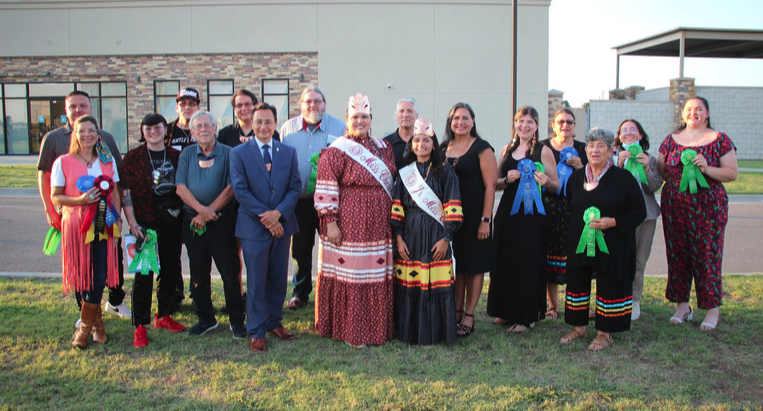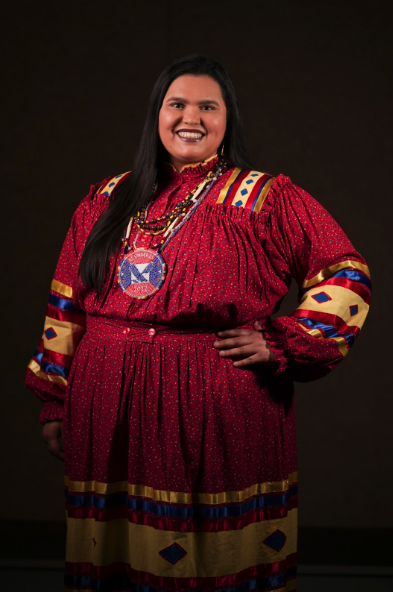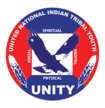
2022-23 UNITY 25 Under 25 Awardee

UNITY asked 25 Under 25 Awardee Chelbie Turtle what are the top three issues of concern facing Cherokee youth today.
Chelbie Turtle: Statistically, the Native American population is associated with low high school and post-secondary retention rates. Although various tribal nations provide students in both high school and post-secondary institutions with educational opportunities and assistance, staggering low levels of education are being attained. In my community, numerous Native youth grow up in poverty, and underdeveloped communities, and are not exposed to the benefits of education. Native youth are oftentimes placed in a position of needing to work to provide for both themselves and their families rather than focusing on education. Furthermore, for those that do receive a high school diploma, the rising cost of higher education is unaffordable for many families. To address this issue, I believe it would be highly beneficial to visit schools and communities to provide hands-on programming that discusses the importance of education. Providing a pamphlet or presentation that lists not only the value of education, but also resources, mentor contacts, and scholarship information, would encourage students to break the statistics. Education is a foundational component for future success, and I believe that this is a message that should be widely shared across my community in hopes of inspiring students to strive for more knowledge.
The second issue facing my community is one that I believe is extremely critical. Over time, a loss of cultural identity has been experienced not only within my community but across many others. The definition of what it means to be “Indigenous” has evolved and changed. As the 21st century continues to shape our generation, along with those before and after us, we are faced with the task of balancing two worlds. Sadly, many tend to conform to the standards of modern society, pushing their cultural identity away. To address this issue, we should be encouraging all to unapologetically show their Indigenous heritage. Specifically targeting youth, potential projects such as summits/academies, school visitations, and peer mentorship programs could be enacted across the community to increase both cultural awareness and engagement. On a wider scale, simple acts such as community art events or language classes could assist in strengthening cultural ties. Lastly, I would suggest that a social media campaign be started in hopes of sparking a movement by incorporating modern technology. Not only would these efforts increase cultural engagement, but they may also lead to many streamlined issues being solved. Ultimately, I feel that it is important for our Indigenous communities to regain a sense of identity through understanding that they stem from a long line of ancestors who were resilient, strong, inspirational people who fought for us to have the opportunities we have today.
The third issue found within my community concerns physical health. Genetically, Native Americans are at a higher risk of having heart disease, diabetes, and cancer – including elders, adults, and youth. This issue has spanned across generations and only continues to become worse. Though such issues stem from genetics, biology cannot assume all of the blame as poor dietary choices, inconsistent exercise habits, and a lack of education are also contributing factors. To address this concern, fitness camps (for all ages) and cooking classes should be widespread across communities to increase healthy mentalities through teaching healthy habits and engaging in fun exercise activities. Furthermore, such projects can expand to schools, families, and other organizations. Such would also serve as an opportunity to incorporate traditional foods and games. It is imperative that we strive to break the cycle of illness and disease that has long impacted our Indigenous communities and enacting these programs would be a vital step toward a positive direction.
Solution-based thinking: Cherokee Cultural Immersion Programming
Considering the above-mentioned issues, one that is of special emphasis is the loss of cultural identity. This is a concern that I witness throughout my community, but especially in the eyes of the youth. As a youth myself, I have strived to culturally immerse myself through participating in community classes and youth leadership programs. In turn, I have experienced the benefits of such actions personally, including personal development and strengthening my cultural connection. However, these actions (and those similar) also widely contribute to the cultural sovereignty of the Cherokee Nation by continuously protecting and perpetuating our identity as Cherokee people. Although, such involvement is not widespread across my community. Thus, one project that could be enacted to address this issue is a Youth Leadership Academy.
Although this project would specifically target Cherokee youth and their cultural identity, the knowledge and practices gained from this opportunity can be shared with all community and family members. In turn, the project’s reach extends far beyond only those in attendance. This annual event (either one or two days) would center on cultural engagement in many forms – language, traditional arts and games, music, history, and government, among others. The sessions and activities of this program would dive deep into the Cherokee culture to expand the knowledge of youth participants. Furthermore, to accompany these lessons, I would like to design a curriculum (accompanied by an activity book) that focuses on the various aspects of Cherokee culture. Not only would these aspects be a valuable educational tool during the academy, but my entire community could benefit from having access to fun, engaging learning activities. I believe that it is imperative for youth to know their nation, not only for cultural awareness but also to actively contribute to building a strong foundation for future generations.
The estimated budget to implement this project would be $5,000. This would cover all costs associated with planning and hosting the event. The estimated timeline to implement this project would be one year. This would allow for ample time to design the project while also solidifying event details.
The idea of this project is to design the Youth Leadership Academy to be a prized leadership experience – rooted in Cherokee culture – that all youth want to take part in. To evaluate the project, I would suggest a type of pre-and-post activity. Participants will engage in an activity that focuses on event topics to gauge their established knowledge. Participants will be asked to engage in the same activity post attending the academy to determine their retention of new knowledge and leadership skills. Furthermore, by reflecting on the experience, participants may examine ways to implement their newfound expanded knowledge within their families, schools, and communities.
The future of any tribal nation lies in the hands of the youth. As such, it is vastly important to directly contribute to their experiences through enacting efforts and programming that seek to broaden horizons through cultural engagement. In turn, such may improve the common issue of cultural identity loss. By establishing the Youth Leadership Academy, participants will receive hands-on activities and lessons that seek to empower young Cherokees to become culturally grounded. Furthermore, these young leaders will become equipped with the knowledge and tools needed to share these lessons with others throughout their home communities. By establishing a curriculum specifically focusing on each aspect of the Cherokee culture and leadership development, generations of Cherokees will be able to expand their knowledge and personal skills. In turn, this would not only serve as a way to address the loss of cultural identity found in my community but would greatly contribute to the continued growth of our Cherokee lifeways, building a stronger future for all.
To make the above project a reality, it will undoubtedly be a team effort consisting of numerous individuals throughout the community. In building the Youth Leadership Academy, I would prefer to assist in helping to craft the program. As this project is designed to benefit the youth of my community, I believe that it would be beneficial to have a youth perspective when designing the event. By offering suggestions regarding activities, guest speakers, and breakout-session topics, among other components, I could assist in crafting the event with youth at the forefront. This youth-designed and youth-led approach would be significantly beneficial in ensuring that the event would be implemented in a manner that always considers its target audience. If the project were to be fully implemented, I would also like to assist in facilitating the event. Whether that includes lending a helping hand throughout the day or designing a breakout session topic (or both), I want to be fully engaged in the project from start to finish. This project is one of many that I feel would serve a great purpose within my community.
Cherokee Community Wellness
All of my life, I have been taught the significance between cultural connection and wellness. Within my community, I have witnessed a loss of cultural engagement across numerous sectors. In turn, I feel that this reality has negatively impacted the wellness of my community. Thus, as this project specifically focuses on developing a culturally-immersive environment, the wellness of my community will reap the benefits.
Strengthening one’s cultural values and connection allows for understanding where we come from, where we are now, and where we are going as Cherokee people. More broadly, the opportunities for activities, social interaction, and personal development stemming from this project would dramatically contribute to wellness on all fronts. Our physical, mental, and social wellness are heavily tied to our unique Indigenous cultures. Our cultures provide a sense of belonging and identity. By focusing on increasing cultural engagement, not only within this project, but in a manner that will include practices that can transcend time by expanding to schools, families, and other organizations, such efforts may transform my community for generations to come. The benefits of this program are vast, and by bridging together cultural engagement and wellness, my community could positively improve and grow for years to come.
##
Chelbie Turtle, Cherokee – Chelbie is a proud citizen of the Cherokee Nation. She is a junior at Northeastern State University pursuing a double major in political science and criminal justice. She is a member of the NSU Honors Program, the Northeastern Student Government Association where she serves as Student Body President, and the Oklahoma Federation of Indian Women, among other campus and community organizations. Chelbie recently completed her year of service as Miss Cherokee 2021-2022, is a former President of the Cherokee Nation Tribal Youth Council from 2017-2021, and is a 2022 recipient of UNITY’s 25 Under 25 award. She enjoys basket weaving, pottery, playing traditional Cherokee games, and volunteering within her community. Upon completing her undergraduate studies, Chelbie intends to further her education by pursuing a Juris Doctor and plans to continue serving Indian County throughout her career.
The UNITY 25 Under 25 is a national youth leadership recognition program. The awards program is designed to celebrate the achievements of Native American and Alaskan Native youth ages 14 to 24 who embody UNITY’s core mission and exude living a balanced life developing their spiritual, mental, physical, and social well-being. Honorees are recognized during the UNITY National Conference, with each receiving a hand-made beaded “25 Under 25” medallion. In addition to being recognized, each awardee will receive special training by UNITY over the period of one year that is designed to build on their individual achievements. The class is recognized as UNITY ambassadors, serving as stellar examples of Native youth leadership in Indian Country today.
